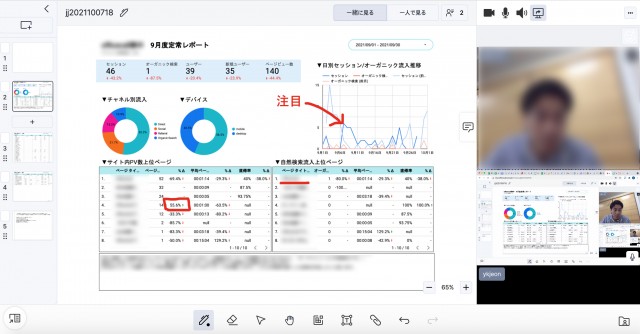Do not Simply Sit There! Start Binary Options
ページ情報
照会 5回
作成日: 24-05-05 06:32
본문
Introduction:
Binary options trading has gained immense popularity in recent years, providing individuals with a unique opportunity to profit from the financial markets. With a well-defined strategy and diligent execution, traders can generate substantial returns within a short period. This article presents an effective binary options trading strategy that can help traders achieve a consistent $1000 profit per day.
5. Risk-Reward Ratio: Prioritize trades that offer a favorable risk-reward ratio. Ideally, the potential profit should outweigh the potential loss by at least 2:1. This ensures that even if a few trades are unsuccessful, overall profitability is maintained.
4. Money Management:
Money management is essential for consistent success in binary options trading. Traders should allocate a specific percentage of their trading capital for each trade, typically ranging from 1% to 5%. It is crucial to avoid overtrading, as this can lead to emotional decision-making and poor judgment. By adhering to a well-defined money management plan, traders can maintain a stable capital base and increase their earning potential.
Introduction:
Binary options trading has gained significant popularity in recent years due to its simplicity and potential for high returns. Traders can profit by accurately predicting whether the price of an underlying asset will rise or fall within a specified timeframe. However, achieving consistent success in binary options requires a well-defined strategy. In this article, we present a winning strategy that can help traders earn $1000 a day by trading binary options.
Conclusion:
Trading binary options can be a lucrative endeavor if approached with the right strategy. By combining fundamental and technical analysis, implementing proper risk and money management techniques, and practicing in a demo environment, traders can increase their chances of earning $1000 a day. However, it is important to remember that trading involves risk, and no strategy can guarantee consistent profits. Continuous learning, adaptation, and staying updated with market trends are crucial for long-term success in binary options trading.
6. Fundamental Analysis: While technical analysis is essential, incorporating fundamental analysis can provide additional insights. Stay informed about economic news releases, corporate earnings reports, and geopolitical events that may impact the price of the chosen assets.
3. Timeframe Selection: Choose a suitable timeframe that aligns with your trading objectives and risk tolerance. Shorter timeframes, such as 5 or 15 minutes, are ideal for day trading binary options and maximizing profit potential.
3. Technical Analysis:
Combine fundamental analysis with technical analysis to refine your trading decisions. Utilize various technical indicators, such as moving averages, Bollinger Bands, Binary options and RSI, to identify potential entry and exit points. Chart patterns, trend lines, and support/resistance levels can also provide valuable insights into market trends.
Understanding Binary Options:
Binary options are financial derivatives that offer traders the opportunity to speculate on the price movements of various assets, such as stocks, currencies, commodities, and indices. Traders predict whether the price of an underlying asset will rise or fall within a specific timeframe. If their prediction is correct, they earn a predetermined profit; otherwise, they lose their initial investment.
3. Risk Management:
Effective risk management is essential for binary options long-term profitability in binary options trading. Traders should limit their risk exposure per trade and Binary options adopt proper position sizing techniques. It is recommended to risk no more than 2% of the trading capital on a single trade. Furthermore, traders should use stop-loss orders to protect their positions from excessive losses.
2. Technical Analysis: Employing technical analysis is crucial for identifying trends and making informed trading decisions. Utilize various technical indicators, such as moving averages, oscillators, and support/resistance levels, to analyze price charts and identify potential entry and exit points.
6. Backtesting and Analysis:
Before implementing the strategy in live trading, it is advisable to perform thorough backtesting and analysis. By using historical data, traders can evaluate the performance of the strategy under different market conditions and identify potential shortcomings. This step allows for optimization and refinement of the strategy before risking real capital.
3. Risk Management:
Successful trading is not only about winning trades but also about managing risks effectively. Traders should establish a risk management plan that includes setting stop-loss and take-profit levels, determining the appropriate position size, and adhering to a disciplined approach. By employing risk management techniques, traders can protect their capital and mitigate potential losses, ensuring long-term profitability.
Binary options trading has gained immense popularity in recent years, providing individuals with a unique opportunity to profit from the financial markets. With a well-defined strategy and diligent execution, traders can generate substantial returns within a short period. This article presents an effective binary options trading strategy that can help traders achieve a consistent $1000 profit per day.
5. Risk-Reward Ratio: Prioritize trades that offer a favorable risk-reward ratio. Ideally, the potential profit should outweigh the potential loss by at least 2:1. This ensures that even if a few trades are unsuccessful, overall profitability is maintained.
4. Money Management:
Money management is essential for consistent success in binary options trading. Traders should allocate a specific percentage of their trading capital for each trade, typically ranging from 1% to 5%. It is crucial to avoid overtrading, as this can lead to emotional decision-making and poor judgment. By adhering to a well-defined money management plan, traders can maintain a stable capital base and increase their earning potential.
Introduction:
Binary options trading has gained significant popularity in recent years due to its simplicity and potential for high returns. Traders can profit by accurately predicting whether the price of an underlying asset will rise or fall within a specified timeframe. However, achieving consistent success in binary options requires a well-defined strategy. In this article, we present a winning strategy that can help traders earn $1000 a day by trading binary options.
Conclusion:
Trading binary options can be a lucrative endeavor if approached with the right strategy. By combining fundamental and technical analysis, implementing proper risk and money management techniques, and practicing in a demo environment, traders can increase their chances of earning $1000 a day. However, it is important to remember that trading involves risk, and no strategy can guarantee consistent profits. Continuous learning, adaptation, and staying updated with market trends are crucial for long-term success in binary options trading.
6. Fundamental Analysis: While technical analysis is essential, incorporating fundamental analysis can provide additional insights. Stay informed about economic news releases, corporate earnings reports, and geopolitical events that may impact the price of the chosen assets.
3. Timeframe Selection: Choose a suitable timeframe that aligns with your trading objectives and risk tolerance. Shorter timeframes, such as 5 or 15 minutes, are ideal for day trading binary options and maximizing profit potential.
3. Technical Analysis:
Combine fundamental analysis with technical analysis to refine your trading decisions. Utilize various technical indicators, such as moving averages, Bollinger Bands, Binary options and RSI, to identify potential entry and exit points. Chart patterns, trend lines, and support/resistance levels can also provide valuable insights into market trends.
Understanding Binary Options:
Binary options are financial derivatives that offer traders the opportunity to speculate on the price movements of various assets, such as stocks, currencies, commodities, and indices. Traders predict whether the price of an underlying asset will rise or fall within a specific timeframe. If their prediction is correct, they earn a predetermined profit; otherwise, they lose their initial investment.
3. Risk Management:
Effective risk management is essential for binary options long-term profitability in binary options trading. Traders should limit their risk exposure per trade and Binary options adopt proper position sizing techniques. It is recommended to risk no more than 2% of the trading capital on a single trade. Furthermore, traders should use stop-loss orders to protect their positions from excessive losses.
2. Technical Analysis: Employing technical analysis is crucial for identifying trends and making informed trading decisions. Utilize various technical indicators, such as moving averages, oscillators, and support/resistance levels, to analyze price charts and identify potential entry and exit points.
6. Backtesting and Analysis:
Before implementing the strategy in live trading, it is advisable to perform thorough backtesting and analysis. By using historical data, traders can evaluate the performance of the strategy under different market conditions and identify potential shortcomings. This step allows for optimization and refinement of the strategy before risking real capital.
3. Risk Management:
Successful trading is not only about winning trades but also about managing risks effectively. Traders should establish a risk management plan that includes setting stop-loss and take-profit levels, determining the appropriate position size, and adhering to a disciplined approach. By employing risk management techniques, traders can protect their capital and mitigate potential losses, ensuring long-term profitability.







